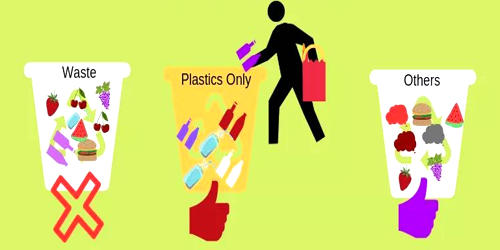According to a new study, up to 1.9 million km2 of the world’s coastal waters are exposed to biologically significant levels of artificial light at night. Concerns about levels of artificial light at night (ALAN) and their potential impacts on the marine environment are growing as coastal areas become more developed. Light pollution has been extensively studied in terms of its effects on the night sky and astronomy, as well as on terrestrial ecosystems, but researchers did not know the full extent of ALAN in the oceans until now.
A new Natural Environment Research Council-funded study maps out areas of the ocean most affected by light pollution, discovering that up to 1.9 million km2 of the world’s coastal waters are exposed to biologically significant levels of ALAN.
Researchers from the University of Plymouth, Plymouth Marine Laboratory, the University of Strathclyde, the Arctic University of Norway, Bar-Ilan University, the Interuniversity Institute for Marine Sciences of Eilat, and Beit Berl Academic College collaborated on the study.
For many years, the extent of artificial light pollution on land has been known. Some may believe that this light does not enter the oceans, but it does, and in large enough quantities to cause biological effects. This is the first atlas that quantifies the extent of ALAN in the oceans.
Dr. Tim Smyth
The researchers were able to build a picture of the coastal ocean areas exposed to ALAN by combining various techniques such as computer modeling, satellite technology, and in situ observations in the River Tamar with a pre-existing world atlas of artificial night sky brightness. The light sensitivity of copepods (a type of microscopic crustacean) was used as a metric to determine the depth of light penetration in the study to gauge artificial light in marine systems.
Setting light levels based on how detectable they are to marine organisms is critical, given the potential effects of ALAN pollution on sea creatures. Many marine species are accustomed to the predictable light changes that occur throughout the day, seasonally, and with the lunar cycle. Light from coastal developments, on the other hand, can scatter a long distance out to sea and has a distinct spectral signature that differs from that of the moon and sunlight. It also differs in terms of the wavelengths that penetrate the water column.

According to the new global atlas of ALAN under the sea, 1.9 million km2 of the coastal ocean are exposed to biologically important ALAN at a depth of one meter (around 3.1 percent of the global Exclusive Economic Zones). At 10m depth, 1.6 million km2 (2.7 percent) is exposed, and at 20m depth, 840,000 km2 is exposed (1.4 percent).
Dr. Tim Smyth, PML Head of Science for Marine Biogeochemistry and Observations and the study’s lead author, added: “The creation of this atlas demonstrates how widespread the issue of artificial light at night is in our coastal seas and, hopefully, will lead to the inclusion of ALAN as a descriptor of disturbance in the same way that underwater noise is currently viewed as a concern. There is still much research to be done to understand the specific effects on marine organisms, the exact spectral nature of this light pollution, and how it is affected by seasons or tides, for example. However, recognizing ALAN’s global presence in this manner is a significant step forward in understanding ALAN and its consequences for the ocean.”
Dr. Thomas Davies, a Senior Author of the Study and Lecturer in Marine Conservation at the University of Plymouth, stated: “For many years, the extent of artificial light pollution on land has been known. Some may believe that this light does not enter the oceans, but it does, and in large enough quantities to cause biological effects. This is the first atlas that quantifies the extent of ALAN in the oceans. The severity of the problem in some areas, such as the Mediterranean, Persian Gulf, and the South China Sea, is truly alarming.”
The study is part of the Artificial Light Impacts on Coastal Ecosystems (ALICE) project’s ongoing research into the effects of artificial light on the marine environment. The same team found that coastal cities expose up to 75% of their neighboring seafloor to harmful light pollution in a study published in Scientific Reports in July 2020.
Artificial lighting along the world’s coastlines may have a significant impact on species that rely on the moon and stars to find food, according to research published in Current Biology in June 2020.
















